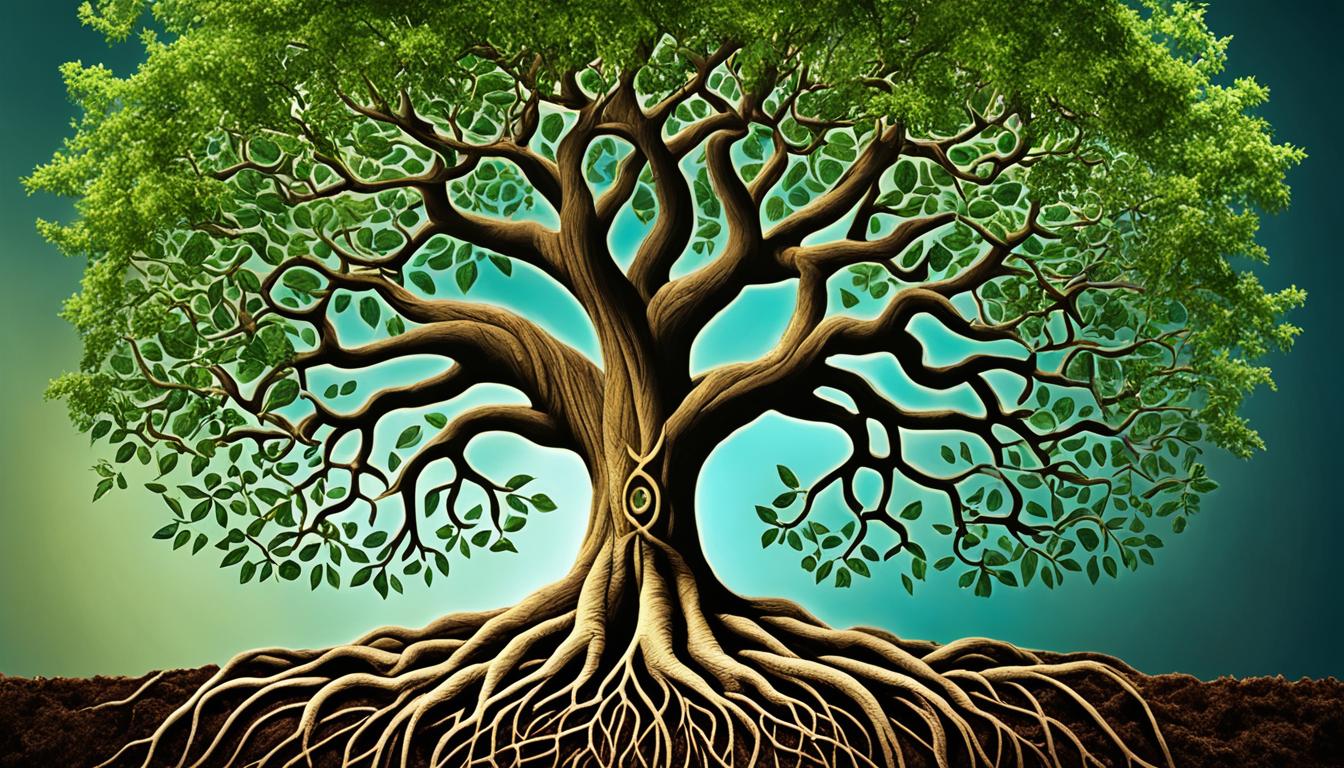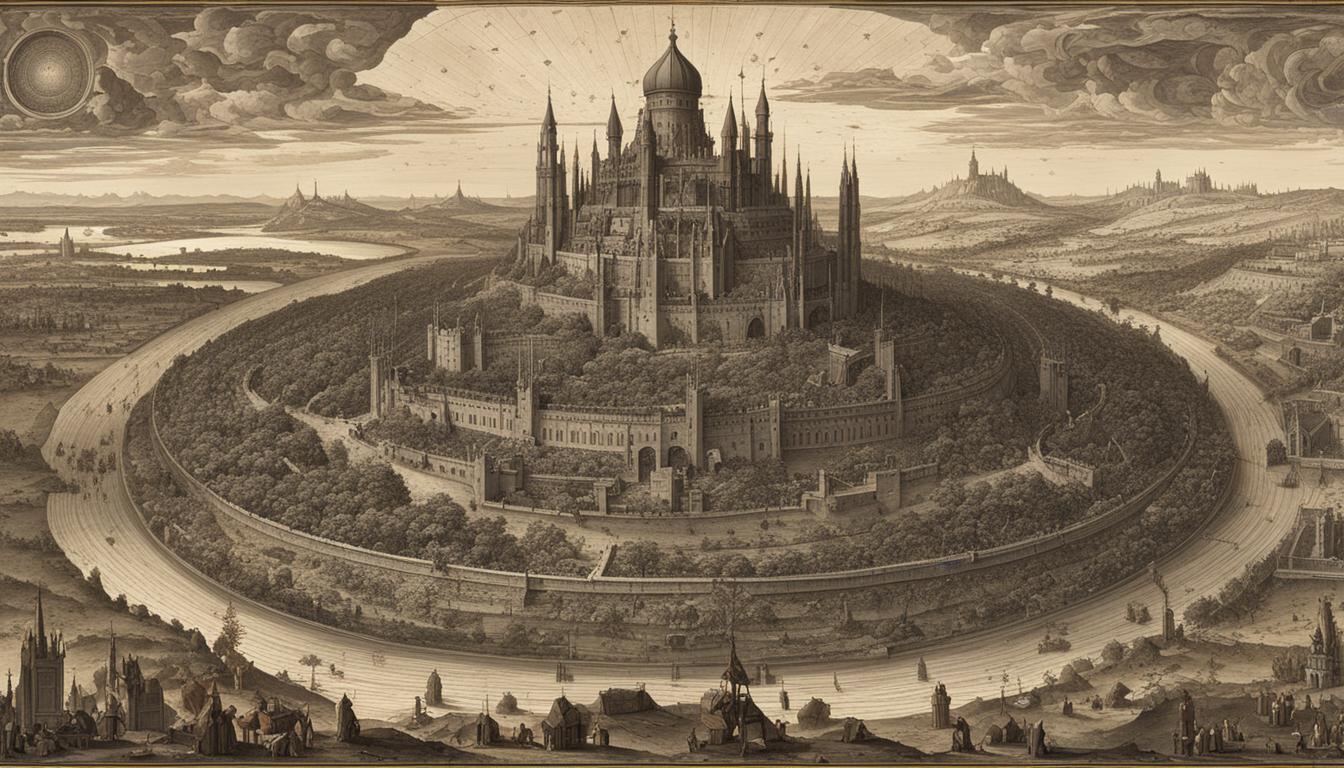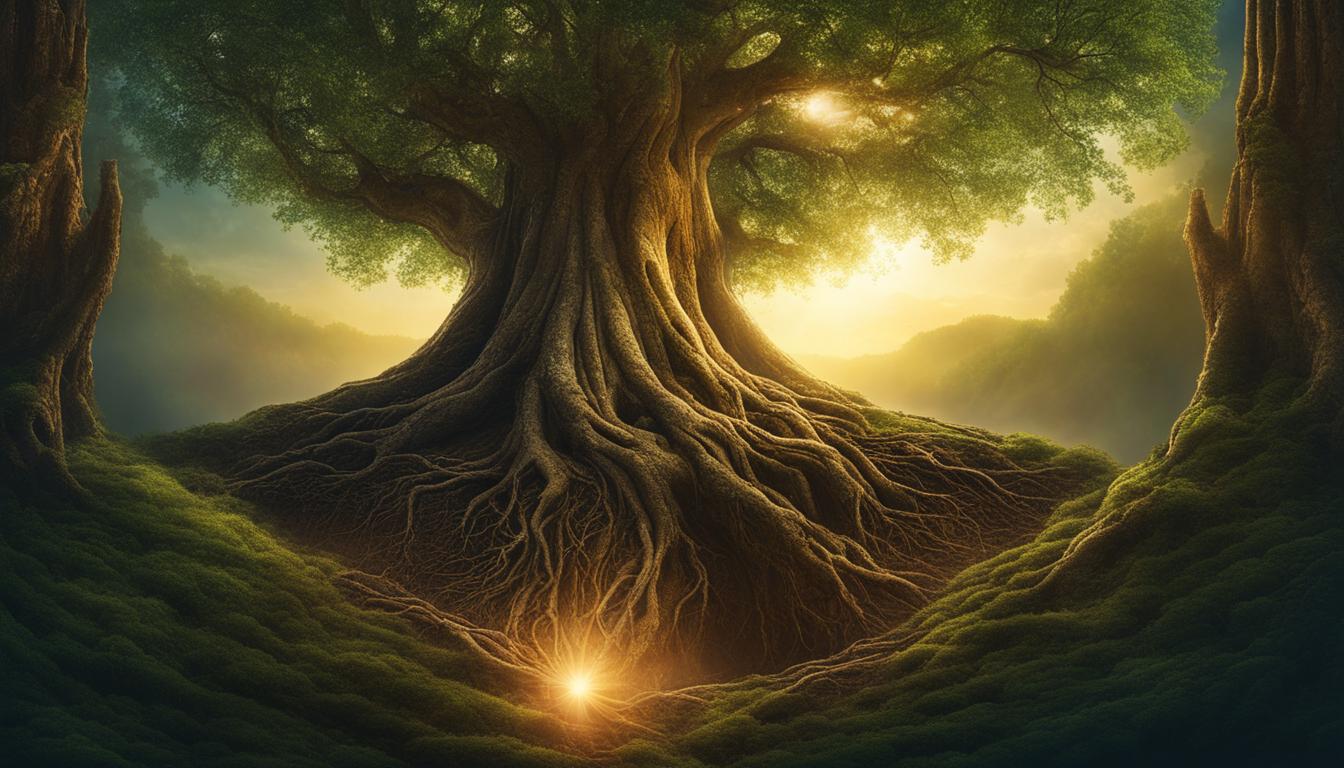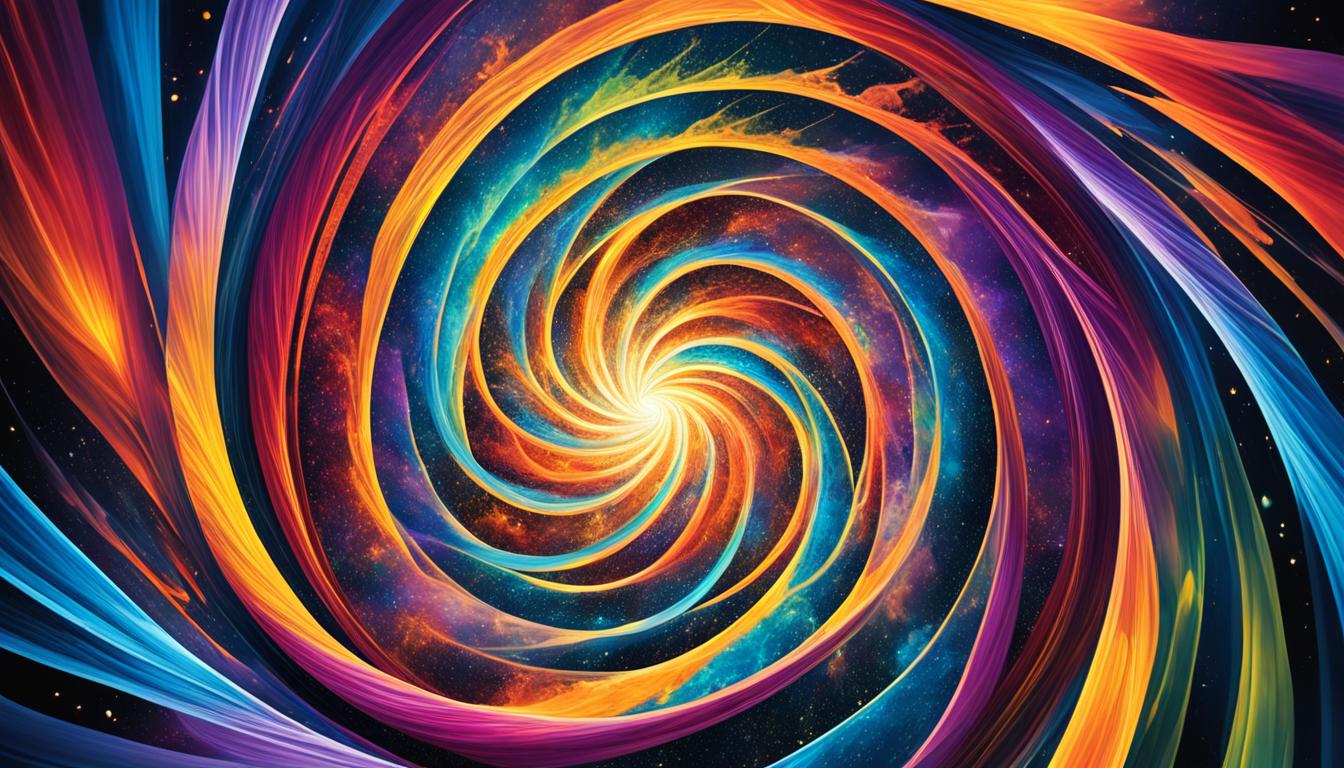Welcome to the fascinating world where science and spirituality converge. In this article, we will explore the profound connection between these two seemingly disparate realms and the transformative impact they can have on our lives. From the exploration of consciousness and quantum physics to the integration of mind and body, science and spirituality offer a holistic approach to understanding the world around us. Get ready to embark on a journey of discovery as we unravel the mysteries of the mind, explore the unity of science and spirituality, and delve into the possibilities of scientific spirituality.
Key Takeaways:
- Science and spirituality intersect in the study of consciousness, quantum physics, and the mind-body connection.
- A holistic approach that integrates both science and spirituality can lead to transformative personal growth.
- The unity of science and spirituality challenges traditional notions of reality and invites a broader understanding of our place in the universe.
- Scientific spirituality bridges the gap between empirical evidence and spiritual practices.
- Integrative medicine and evolutionary consciousness are emerging fields that combine scientific and spiritual insights for holistic healing and personal evolution.
The Essence of Consciousness
Consciousness is the canvas upon which our experiences are painted. It is the inner light that allows you to perceive and make sense of the world. Science has made progress in identifying the neural correlates of consciousness, but the origin and nature of consciousness remain a mystery. Consciousness studies have led to breakthroughs in neuroscience, but they do not fully explain consciousness itself. Delving into altered and expanded states of consciousness through meditation, psychedelics, or spiritual practices raises questions about the nature of reality and the interconnectedness of all life.

The Unifying Potential
As you explore consciousness studies, you will discover that the boundaries between science and spirituality begin to blur. Consciousness emerges as a unifying thread that runs through both scientific inquiry and spiritual contemplation. It invites you to reconsider your understanding of reality and your place within it.

Consciousness studies offer a new perspective on the universe and our role in it, harmonizing the realms of science and spirituality. It is through the exploration of consciousness that we can bridge the gap between these two seemingly separate domains. By recognizing the interconnectedness of all things and the inherent unity of science and spirituality, we gain a deeper understanding of the nature of reality.
“The more I explore consciousness, the more I realize that science and spirituality are not opposing forces but complementary aspects of the same truth.” – Dr. Deepak Chopra
This unity of science and spirituality allows us to approach the mysteries of the universe with a holistic mindset. It encourages us to combine the rigorous scientific method with the profound wisdom found in ancient spiritual traditions. By integrating these two perspectives, we can uncover deeper truths and expand our understanding of the world we inhabit.
The Power of Integration
The integration of science and spirituality opens up new possibilities for growth and transformation. It enables us to tap into the vast potential of both fields and harness their collective wisdom. Through this integration, we can explore the inner workings of the mind and the profound mysteries of the universe.
When science and spirituality come together, we can delve deeper into the nature of consciousness, the mind-body connection, and the fundamental laws that govern our existence. This integrated approach allows us to explore the limits of human potential and discover new ways to improve our well-being and navigate the complexities of life.
The unity of science and spirituality is not about discounting the value of either discipline. Instead, it is about recognizing that they are different facets of the same underlying truth. By merging the insights from both science and spirituality, we can create a more comprehensive and holistic understanding of ourselves, the world, and our place within it.
The Historical Relationship between Science and Religion
Historically, science and religion have had a complex and intertwined relationship. Science, as we know it today, emerged from the heart of the Christian West, drawing inspiration from both medieval cosmology and Christian theology. The belief in an ordered and rational universe, rooted in the Old Testament, laid the groundwork for the scientific exploration of the natural world. Simultaneously, the New Testament’s emphasis on the interaction between matter and spirit provided the openness needed for scientific inquiry.
However, the rise of modern science, with its focus on change and dynamic systems, led to a gradual separation between science and religion. This shift was further exacerbated by the introduction of the Darwinian theory of evolution, which challenged certain religious interpretations of the origins of life. The tension between scientific advancements and religious beliefs caused a divide and fueled debates regarding the compatibility of science and religion.
Nevertheless, it is essential to recognize that science itself finds its origins in the Christian tradition. Many of the greatest scientific minds throughout history were devout Christians who sought to uncover the mysteries of the natural world as a means of understanding the divine. Modern science, when viewed through a broader lens, is compatible with Christianity; it provides a deeper understanding of the intricacies and complexities of creation.

This image depicts the intricate and awe-inspiring cosmological model of the medieval era, which was deeply influenced by both scientific and religious perspectives of that time.
The Rise of Science and Religion as a Discipline
In the mid-twentieth century, scientists, theologians, and philosophers began to embrace the intersection of science and religion, leading to the emergence of the field of Science and Religion. This field aimed to reconcile the insights and perspectives offered by both disciplines, paving the way for a deeper understanding of our complex world.
One individual who played a significant role in shaping this discipline was Ian Barbour. Barbour’s four-fold scheme provided a framework for comprehending the relationship between science and religion. This scheme identified four levels of interaction: conflict, independence, dialogue, and integration.
“Integration aims to unify science and religion into a single discourse, harmonizing their insights into a unified vision of the world.” – Ian Barbour
Integration, the highest level of interaction according to Barbour’s scheme, seeks to integrate the knowledge and perspectives of science and religion. It recognizes that both science and religion offer valuable insights into the nature of reality and our place in it.

This integration is not about compromising or diluting either discipline, but rather about acknowledging their unique contributions and finding common ground. By harmonizing scientific and religious insights, we can develop a more comprehensive understanding of the world and address some of the most significant questions that humanity faces.
Through the rise of Science and Religion as a discipline, we have paved the way for a more holistic approach to knowledge. By embracing integration, we invite dialogue and collaboration between scientists, theologians, and philosophers, fostering a unity that offers new possibilities for exploration and understanding.
The Role of Science and Religion in Society
Science and religion are both essential in our quest to understand reality. Unfortunately, our educational system often presents them as opposing forces, rather than two complementary ways of gaining knowledge about the world. It is crucial to recognize the compatibility and interplay between science and religion, and the importance of integrating their insights.
A Gallup poll reveals that less than forty percent of the public is familiar with the fundamentals of modern science. This statistic highlights the urgent need to bridge the gap and promote a more comprehensive understanding of both science and religion.

By embracing the compatibility between science and religion, we can cultivate a more holistic understanding of reality and its intricate workings. Science equips us with analytical tools and empirical evidence, while religion provides a framework for exploring existential questions and ethical values.
Science without religion is lame, religion without science is blind.” – Albert Einstein
Both science and religion offer unique perspectives on reality, and integrating their insights can lead to a more comprehensive worldview. By combining scientific knowledge with the wisdom of religious and spiritual traditions, we can foster a deeper understanding of ourselves, our relationships with others, and our place in the universe.
Education should aim to equip individuals with the intellectual curiosity to explore both science and religion, appreciating their shared goal of unraveling the mysteries of the world.
The Impact of Science and Spirituality on Personal Growth
The exploration of science and spirituality holds incredible potential for personal growth and transformation. By integrating scientific inquiry with spiritual practices and principles, individuals can cultivate a deeper understanding of themselves and their place in the world.
Quantum physics, in particular, offers fascinating insights into the interconnectedness of all things. It reveals that at the fundamental level, everything in the universe is interconnected, influencing each other in ways we are only beginning to comprehend. This realization has profound implications for personal growth.
“The interconnectedness revealed by quantum physics invites us to adopt a more holistic approach to life. We are not separate beings, but rather integral parts of a vast and intricate web of existence.”
When we recognize and embrace this interconnectedness, we can no longer view ourselves in isolation. Instead, we understand that our thoughts, actions, and energy have ripple effects that extend far beyond our immediate sphere. This awareness empowers us to make conscious choices that not only positively impact our own lives but also contribute to the well-being of others and the world at large.
Moreover, the blending of science and spirituality allows us to explore the depths of our consciousness and tap into our innate potential. Spiritual practices such as meditation, mindfulness, and contemplation offer methods for cultivating self-awareness, expanding our consciousness, and unlocking hidden abilities.

This image represents the transformative journey of personal growth, symbolizing the potential for profound change and expansion that arises when we integrate the realms of science and spirituality. It serves as a visual reminder of the infinite possibilities that await us when we embark on this exploration.
In summary, the combined power of science and spirituality offers an extraordinary opportunity for personal growth and transformation. By embracing the interconnectedness of all things and integrating spiritual practices into scientific endeavors, we can unlock our true potential and cultivate a deeper understanding of ourselves and the world around us.
Conclusion
Bridging science and spirituality is essential for a holistic understanding of reality. The harmonious integration of these two disciplines has the potential to lead to significant advancements in fields such as consciousness studies, integrative medicine, and evolutionary consciousness.
Embracing the unity of science and spirituality offers a new perspective on the world and our place in it. By harmonizing scientific inquiry with spiritual contemplation, we can foster personal growth and promote a more comprehensive understanding of reality.
Science and spirituality are not mutually exclusive, but rather complementary approaches to uncovering the mysteries of the universe. When we embrace the integration of these disciplines, we open up new possibilities for discovering the interconnectedness of all things and the deeper truths that lie beyond our current understanding.
FAQ
How has the COVID-19 pandemic impacted religious activities?
The COVID-19 pandemic has significantly impacted religious activities, with some religious groups adhering to public health precautions while others have contributed to the spread of the virus. Studies have explored the impact of the pandemic on religious communities and the role of religion in coping with stress.
What is consciousness?
Consciousness is the canvas upon which our experiences are painted. It is the inner light that allows us to perceive and make sense of the world. While neuroscience has made progress in identifying the neural correlates of consciousness, its origin and nature remain a mystery.
How do consciousness studies relate to science and spirituality?
Consciousness studies blur the boundaries between science and spirituality, as consciousness is a unifying thread in both scientific inquiry and spiritual contemplation. It invites us to reconsider our understanding of reality and our place within it, harmonizing the realms of science and spirituality.
What is the historical relationship between science and religion?
Science and religion have historically had a complex relationship. Science originated from the Christian West, influenced by the order and rationality emphasized in the Old Testament and the openness of matter to spirit in the New Testament. The rise of modern science, with its focus on change and dynamic systems, caused a separation between science and religion. The theory of evolution further strained the relationship, but it is important to recognize that science finds its origins in Christianity and is compatible with it.
How did Science and Religion develop as a discipline?
In the mid-twentieth century, the field of Science and Religion emerged as scientists, theologians, and philosophers grappled with insights from modern science. Ian Barbour’s four-fold scheme helped make sense of the relationship between science and religion, including the levels of conflict, independence, dialogue, and integration. Integration aims to unify science and religion into a single discourse, harmonizing their insights into a unified vision of the world.
How do science and religion contribute to our understanding of reality?
Both science and religion play vital roles in our understanding of reality. However, our educational system often treats them as antithetical disciplines instead of two ways of understanding the world. It is crucial to emphasize the compatibility between science and religion and the importance of integrating their insights.
What is the impact of science and spirituality on personal growth?
The exploration of science and spirituality has the potential to facilitate personal growth and transformation. Quantum physics, for example, offers insights into the interconnectedness of all things, leading to a more holistic approach to life. By incorporating spiritual practices and principles into scientific inquiry, individuals can cultivate a deeper understanding of themselves and their place in the world.
What is the importance of bridging science and spirituality?
Bridging science and spirituality is essential for a holistic understanding of reality. The harmonious integration of these two disciplines has the potential to lead to significant advancements in fields such as consciousness studies, integrative medicine, and evolutionary consciousness. Embracing the unity of science and spirituality offers a new perspective on the world and fosters personal growth and a more comprehensive understanding of reality.
Source Links
- https://www.linkedin.com/pulse/consciousness-bridge-between-material-immaterial-zen
- https://www.frontiersin.org/articles/10.3389/fpsyt.2023.1183234
- https://christogenesis.org/bridging-the-gap-between-science-and-religion/


